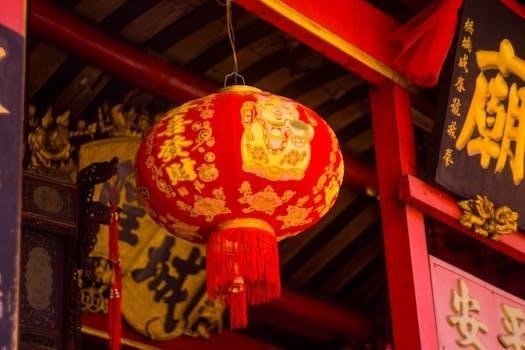
adinkra symbols and meanings pdf
Adinkra symbols are visual representations embodying concepts and proverbs significant in Akan culture. These symbols convey messages, ideologies, and philosophical meanings. They are a coded language, expressing profound ideas that shape Ghanaian tradition. Decoding these symbols unlocks deeper cultural understandings, found often in Adinkra symbols and meanings pdf resources.
Adinkra symbols represent a rich tapestry of Akan philosophy, encapsulating complex ideas within stylized designs. These symbols function as a visual language, conveying proverbs, moral codes, and historical narratives. They are more than mere decorations; they are potent reminders of cultural values. Resources such as Adinkra symbols and meanings pdf documents are essential tools for deciphering their hidden meanings.
Understanding Adinkra symbols provides insight into the worldview of the Akan people. Each symbol holds a specific significance, often reflecting wisdom accumulated over generations. They appear on textiles, pottery, and even in modern contexts like tattoos, demonstrating their enduring relevance. The symbols encourage reflection on ethical principles, social responsibilities, and the interconnectedness of life.
Exploring these symbols through accessible materials like an Adinkra symbols and meanings pdf allows individuals to connect with a cultural heritage that emphasizes both individual character and communal harmony. They are not just relics of the past but living emblems that continue to inspire and educate. Their continued use affirms their power to communicate values across time and space.
The origin and history of Adinkra are deeply intertwined with the Ashanti people of Ghana and the Gyaman people of Côte d’Ivoire. Legend suggests that the symbols originated from Gyaman, with the name “Adinkra” derived from the name of a Gyaman king who was defeated and captured by the Ashanti. It is said that the Ashanti adopted the symbols after witnessing their use on the king’s clothing.
Initially, Adinkra symbols were primarily associated with royalty and spiritual leaders, signifying power, status, and sacred beliefs. Over time, their use expanded, becoming integrated into various aspects of Akan society, including clothing, architecture, and ceremonial objects. The symbols served as a means of communicating cultural values, historical events, and philosophical concepts.
Detailed information about the origin and history of Adinkra can be found in various academic sources and cultural publications, including resources available as Adinkra symbols and meanings pdf documents. These resources provide valuable insights into the evolution of the symbols and their enduring significance in West African culture. They allow for a better appreciation of the rich historical context surrounding these visual representations of Akan wisdom.
Adinkra symbols hold a prominent place in Ghanaian culture, permeating various facets of daily life and artistic expression. These symbols serve as visual representations of Akan proverbs, beliefs, and historical events, communicating profound cultural values and philosophical concepts. They are deeply embedded in the social fabric of Ghana, acting as a form of non-verbal communication that transcends linguistic barriers.
In traditional Ghanaian society, Adinkra symbols are frequently used in textiles, particularly Adinkra cloth, which is worn during important ceremonies, funerals, and other significant occasions. The symbols are carefully printed onto the cloth, conveying specific messages or reflecting the wearer’s status and beliefs. Beyond textiles, Adinkra symbols can be found in architecture, pottery, and wood carvings, adorning buildings, tools, and decorative objects.
The meaning and significance of Adinkra symbols are passed down through generations, ensuring the preservation of Akan cultural heritage. Many resources, including Adinkra symbols and meanings pdf documents, offer detailed explanations of the symbols’ interpretations and their relevance in modern Ghanaian society. These resources are invaluable for understanding the enduring cultural importance of Adinkra symbols.
The meaning and significance of Adinkra designs extend far beyond mere aesthetic appeal; they are powerful visual tools for communicating complex ideas and cultural values. Each symbol encapsulates a specific concept, proverb, or historical event, offering insights into Akan philosophy and worldview. Understanding these designs requires delving into their rich symbolism and appreciating their context within Ghanaian society.
Adinkra symbols serve as a means of preserving and transmitting cultural knowledge across generations. They embody moral principles, social norms, and historical narratives, reinforcing a sense of shared identity and collective memory. The symbols often convey messages of wisdom, perseverance, justice, and interconnectedness, guiding individuals towards ethical conduct and social harmony.
Many resources, including Adinkra symbols and meanings pdf documents, provide detailed explanations of the symbols’ interpretations and their cultural significance. These resources highlight the importance of understanding the nuances of each design and its intended message. They also emphasize the role of Adinkra symbols in promoting cultural pride and preserving the heritage of the Akan people. The designs help communicate and reinforce values of the culture.
Several Adinkra symbols have gained widespread recognition for their profound meanings and cultural significance. One notable example is the “Gye Nyame” symbol, representing the supremacy of God, a testament to the Akan people’s deep-seated belief in a higher power. Another prominent symbol is “Sankofa,” which urges individuals to learn from the past to build a better future.
“Duafe,” a wooden comb, symbolizes beauty and cleanliness, both physically and spiritually. “Mframadan,” representing resilience, encourages perseverance through adversity, drawing inspiration from a sturdy building that withstands strong winds. “Bese Saka,” a sack of cola nuts, signifies affluence, abundance, and togetherness, often associated with trade and social gatherings.
Resources such as Adinkra symbols and meanings pdf documents offer comprehensive insights into these and numerous other symbols. They provide detailed explanations of their visual representations, historical contexts, and cultural interpretations. Exploring these examples allows for a deeper appreciation of the richness and complexity embedded within Adinkra symbols, fostering a greater understanding of Akan culture and philosophy. These symbols are not just decorations.
The Nyame Dua, translating to “Tree of God,” is a powerful Adinkra symbol representing the altar or sacred place where offerings are made. It embodies the concept of God’s presence and the importance of spirituality in daily life. This symbol signifies purification, sanctification, and the recognition of a divine connection.
The Nyame Dua often appears as a stylized tree or post, sometimes adorned with cloths or other symbolic objects. It signifies a space for reverence and communication with the divine. In Akan tradition, the Nyame Dua serves as a reminder of the constant presence of God and the need for spiritual cleansing.
Resources such as Adinkra symbols and meanings pdf documents provide detailed explanations of the Nyame Dua’s significance. These resources often highlight its connection to concepts like faith, hope, and the pursuit of spiritual growth. The symbol encourages individuals to seek inner peace and connect with something greater than themselves. The Nyame Dua is not just a symbol.

Several Adinkra symbols embody concepts of justice, power, and authority within Akan society. These symbols often represent leadership qualities, ethical conduct, and the importance of maintaining social order. Exploring these symbols provides insight into the values and principles that underpin Akan governance and legal systems.
One prominent symbol is “Fawohodie,” representing independence and freedom. It signifies the importance of individual rights and the ability to make autonomous decisions. Other relevant symbols include those representing strength, courage, and the ability to overcome adversity.
Resources like Adinkra symbols and meanings pdf documents offer comprehensive information on these symbols. They often detail the historical context and cultural significance of each symbol. These resources are invaluable for understanding how these symbols were used to communicate ideas about justice, power, and social responsibility. Exploring such materials can show the intricacies of Akan society.
Adinkra symbols have transcended their traditional context and found vibrant expression in modern applications, particularly in textiles and tattoos. These symbols, rich in meaning and cultural significance, adorn fabrics and skin, serving as powerful statements of identity, heritage, and personal values. In textiles, Adinkra designs are incorporated into clothing, home decor, and accessories. These symbols can be printed, woven, or embroidered onto fabrics, creating visually striking patterns that convey messages of wisdom, strength, and resilience.
Tattoos provide another avenue for modern expression of Adinkra symbols. Individuals choose symbols that resonate with their personal beliefs, experiences, or aspirations. These tattoos serve as permanent reminders of cultural heritage and as visual representations of individual identity.

Resources such as Adinkra symbols and meanings pdf documents are invaluable for individuals seeking to understand the significance of these symbols before incorporating them into their personal style. They offer a wealth of information on the history, meaning, and cultural context of each symbol.

Adinkra Symbols and Meanings
The Origin and History of Adinkra
Adinkra Symbols in Ghanaian Culture
Meaning and Significance of Adinkra Designs
Examples of Popular Adinkra Symbols and Their Meanings

Nyame Dua⁚ Tree of God
Adinkra Symbols Related to Justice and Power
Adinkra Symbols in Modern Usage⁚ Textiles and Tattoos
Resources for Further Learning⁚ Adinkra Symbols PDF
For those seeking a deeper understanding of Adinkra symbols, numerous resources are available, with Adinkra symbols and meanings PDF documents being particularly valuable. These PDFs offer comprehensive guides to the symbols, detailing their origins, meanings, and cultural significance. They often include high-quality images of each symbol, along with explanations of their associated proverbs and philosophical concepts. These resources serve as invaluable tools for researchers, students, artists, and anyone interested in exploring the rich cultural heritage of the Akan people.
Several websites and online databases also offer information on Adinkra symbols, but PDFs provide a convenient and easily accessible way to study these symbols offline. Many of these PDFs are freely available, while others may be purchased from reputable sources.
When selecting a Adinkra symbols and meanings PDF, it’s important to ensure that the source is reliable and accurate. Look for resources that are created by cultural experts or academic institutions. These resources will provide the most authentic and informative explanations of the symbols;